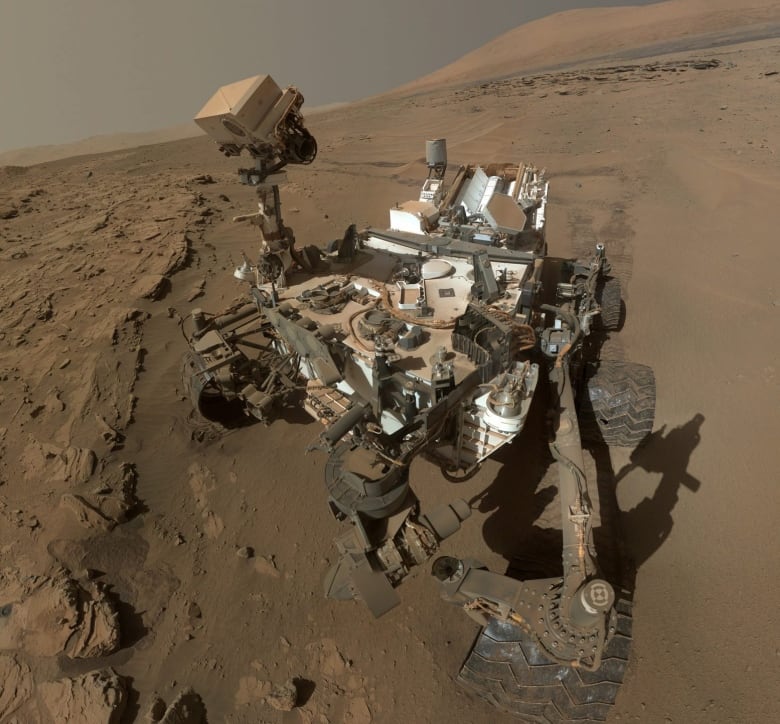Curiosity rover on Mars photographs ball-shaped rock
Small sphere likely formed by geological process called concretion
NASA's newest Mars rover has found a geological oddity: a nicelyshaped sphere lying on the rocky surface of the Red Planet.
The rock ball was photographed on Sept. 11 while the U.S. space agency's Curiosity rover was exploring a region of Mars known as the Gale Crater.

One of Curiosity's cameras captured several images of the centimetre-wideball as part of the stream of photographs it regularly takes of its surroundings and beams back to Earth.
It's not the first time rockyspheres have been found on Mars. In 2004, NASA's Opportunity rover photographed a group of tiny balls made of a ferrous mineral called hematite. Opportunity photographed still morespheres, of a different composition,eight years later.
The spheres likely formed through a process called concretion, where minerals precipitate within sedimentary rock, often into oval or spherical shapes. When the rock erodes due to wind or water, it leaves the balls of minerals behind and exposed. Similar formations can be found in many places on Earth.
If in fact concretion caused the Mars spheres, then they would beevidence there was once water on the planet. However, some scientists believe the rock balls might be the leftovers from meteorites that broke up in the Martianatmosphere.
Measuring roughly three by three metres, the nearly one-tonne Curiosity landed on Mars in 2012 and has been exploring the planet's surface ever since. It is the fourth successful rover to explore the Red Planet.













_(720p).jpg)


 OFFICIAL HD MUSIC VIDEO.jpg)
.jpg)



























































































